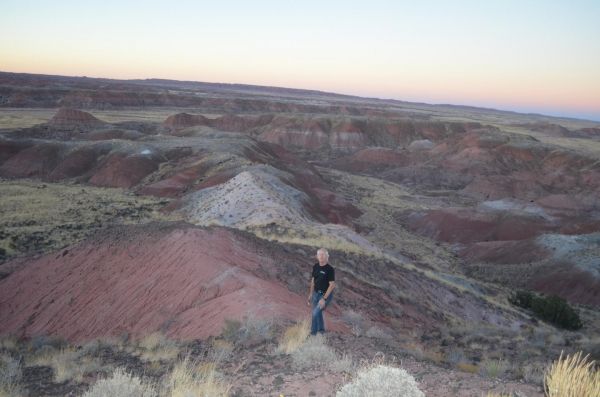Scientists drilling deep into ancient rocks in the Arizona desert say they have documented a gradual shift in Earth’s orbit that repeats regularly every 405,000 years, playing a role in natural climate swings. Astrophysicists have long hypothesized that the cycle exists based on calculations of celestial mechanics, but the authors of the new research have found the first verifiable physical evidence. They showed that the cycle has been stable for hundreds of millions of years, from before the rise of dinosaurs, and is still active today. The research may have implications not only for climate studies, but our understanding of the evolution of life on Earth, and the evolution of the Solar System. It appears this week in the Proceedings of the National Academy of Sciences.
Scientists have for decades posited that Earth’s orbit around the sun goes from nearly circular to about 5 percent elliptical, and back again every 405,000 years. The shift is believed to result from a complex interplay with the gravitational influences of Venus and Jupiter, along with other bodies in the Solar System as they all whirl around the Sun like a set of gyrating hula-hoops, sometimes closer to one another, sometimes further. Astrophysicists believe the mathematical calculation of the cycle is reliable back to around 50 million years, but after that, the problem gets too complex, because too many shifting motions are at play.
“There are other, shorter, orbital cycles, but when you look into the past, it’s very difficult to know which one you’re dealing with at any one time, because they change over time,” said lead author Dennis Kent, an expert in paleomagnetism at Columbia University’s Lamont-Doherty Earth Observatory and Rutgers University. “The beauty of this one is that it stands alone. It doesn’t change. All the other ones move over it.”
Read more at The Earth Institute at Columbia University
Image: Within ancient rocks in Arizona's Petrified Forest National Park, scientists have identified signs of a regular variation in Earth's orbit that influences climate. Here, one of the authors near the research site. (Credit: Kevin Krajick/Lamont-Doherty Earth Observatory)


